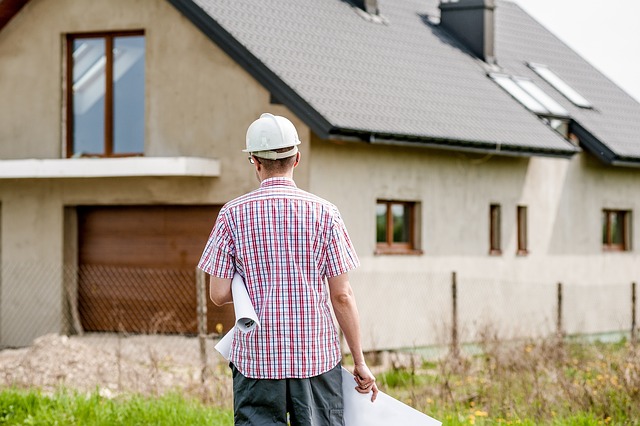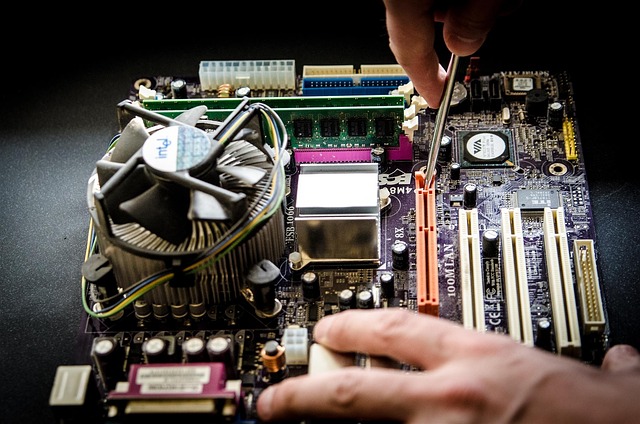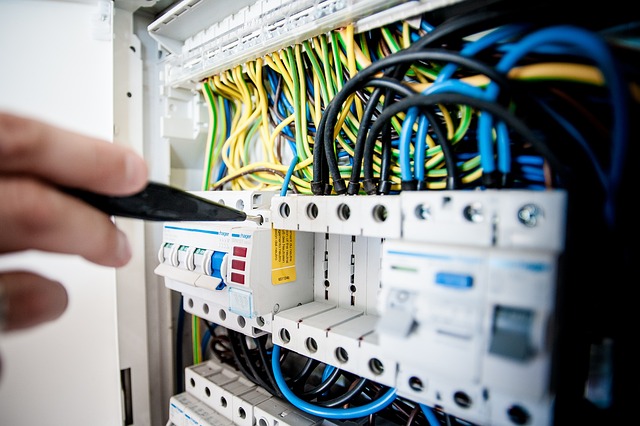Homeowners seeking to enhance their living spaces and reduce energy costs can benefit from targeted repairs and maintenance on windows and doors. This article delves into the essentials of window and door efficiency, guiding readers through the process of identifying inefficiencies, selecting optimal materials, mastering sealing techniques, and understanding the impact of insulation and glazing. By integrating these practices into home repair and maintenance routines, homeowners can achieve significant energy savings and a more comfortable home environment.
- Assessing the State of Your Windows and Doors: A Primer on Identifying Inefficiencies
- The Role of Quality Materials in Enhancing Energy Efficiency in Windows and Doors
- Effective Sealing Techniques to Prevent Energy Loss Through Windows and Doors
- The Importance of Proper Insulation and Glazing for Improved Home Energy Efficiency
- Regular Maintenance and Upkeep: Extending the Lifespan and Performance of Your Home's Windows and Doors
Assessing the State of Your Windows and Doors: A Primer on Identifying Inefficiencies

When striving for a more energy-efficient home, understanding the state of your windows and doors is paramount for effective home repair and maintenance. These components are not just entry and exit points but also significant contributors to a home’s thermal performance. To accurately assess their efficiency, one must pay close attention to several factors. Visual inspections can reveal obvious signs of wear such as cracked seals, warping frames, or damaged glazing that compromises the integrity of window and door systems. Operational checks are equally important; windows and doors that stick, bind, or do not latch securely can be indicators of underlying issues, potentially leading to energy loss. It’s essential to inspect weather stripping and caulking for deterioration, as these are critical barriers against air infiltration. Utilizing a combination of manual checks and tools like infrared cameras can help homeowners pinpoint areas where heat is escaping or cold air is entering. By identifying these inefficiencies through regular maintenance, homeowners can make informed decisions on whether repairs or replacements are necessary to enhance the energy efficiency of their homes. This due diligence not only contributes to a more comfortable living environment but also reduces energy costs and environmental impact.
The Role of Quality Materials in Enhancing Energy Efficiency in Windows and Doors

Incorporating high-quality materials into window and door repairs is a pivotal aspect of bolstering a home’s energy efficiency. The choice of materials can significantly impact thermal performance, with options like double or triple-pane glass providing superior insulation compared to single-pane variants. Additionally, frames made from advanced composite materials or energy-efficient foam core composites can minimize air infiltration and heat transfer, keeping homes warmer in winter and cooler in summer. These materials not only enhance comfort but also contribute to reduced energy consumption and lower utility bills. Homeowners should prioritize durable, well-insulating materials when repairing or replacing windows and doors as part of their home repair and maintenance efforts, ensuring long-term savings and environmental benefits.
Furthermore, the sealing systems in windows and doors play a crucial role in maintaining energy efficiency. High-performance sealants prevent drafts and moisture intrusion, safeguarding both indoor air quality and structural integrity. The use of weatherstripping and proper caulking around moving parts can further enhance performance, creating a tight barrier that maintains temperature control within the home. Regular maintenance, such as checking and replacing damaged seals, is essential for maintaining the energy efficiency of windows and doors, and should be a key component of any home repair and maintenance plan aimed at optimizing energy usage.
Effective Sealing Techniques to Prevent Energy Loss Through Windows and Doors

Regular home repair and maintenance, particularly in the realm of window and door upkeep, play a significant role in enhancing energy efficiency. Effective sealing techniques are crucial for preventing energy loss through windows and doors, which can otherwise lead to increased heating and cooling costs. Homeowners should consider employing weather stripping, a common technique that involves fitting strips of resilient material such as rubber or vinyl along the edges of doors and windows to create an airtight seal. This simple home repair helps to prevent cold drafts and warm air from escaping during extreme weather conditions.
Another method for preventing energy loss is caulking, which should be used judiciously around window and door frames where stationary elements meet movable parts. High-quality caulk can fill gaps and cracks without impeding the operation of these components. It’s important to use a durable and flexible sealant that can withstand temperature fluctuations and movement over time. Additionally, for windows and doors that experience significant movement or have larger gaps, spray foam insulation can be an effective solution. This material expands to fill spaces completely, providing an exceptional seal that contributes to energy savings. Regular inspection and maintenance are key; the effectiveness of these sealing techniques can diminish over time due to wear and tear, so homeowners should routinely check and reapply weather stripping and caulk as needed to maintain optimal energy efficiency.
The Importance of Proper Insulation and Glazing for Improved Home Energy Efficiency

Maintaining optimal energy efficiency in a home is a multifaceted endeavor that hinges on several key elements, among which proper insulation and glazing play pivotal roles. Insulation acts as a barrier against the transfer of heat, effectively keeping a home warm during winter and cool during summer. Ensuring that walls, attics, crawl spaces, and foundations are adequately insulated can significantly reduce heating and cooling costs, making homes more comfortable while lessening the environmental impact of energy consumption. Home Repair And Maintenance practices should prioritize the assessment and upgrading of insulation materials, with an eye on advancements like spray foam or blown-in insulation that offer superior R-values compared to traditional options.
Glazing, specifically double or triple-pane windows, also contributes significantly to energy efficiency. These window designs incorporate spaces between panes filled with inert gases like argon, which are more effective at heat conduction than air. This technology reduces the amount of UV and infrared light that enters or exits a home, further enhancing temperature control. Homeowners should consider low-emissivity (low-E) coatings on glass to reflect additional heat back into the home during colder months while keeping out the sun’s rays during warmer seasons. Combining these glazing solutions with regular window maintenance as part of Home Repair And Maintenance routines ensures that windows remain airtight and continue to offer the energy-saving benefits for which they were designed. By addressing insulation and glazing, homeowners can significantly improve their home’s overall energy efficiency, leading to reduced utility bills and a more sustainable living environment.
Regular Maintenance and Upkeep: Extending the Lifespan and Performance of Your Home's Windows and Doors

Homeowners looking to enhance their living spaces and reduce energy costs should consider the critical role of window and door repairs in achieving better energy efficiency. By meticulously assessing the condition of these points of entry and exit, homeowners can identify areas where sealing techniques and material upgrades are necessary. Quality materials play a pivotal role in maintaining temperature consistency within the home, while proper insulation and glazing further bolster energy efficiency. Regular maintenance and thoughtful upkeep not only extend the lifespan of these structural elements but also ensure they perform optimally year-round. Implementing these practices falls squarely within the realm of effective home repair and maintenance, offering tangible benefits for comfort, cost savings, and environmental impact.
